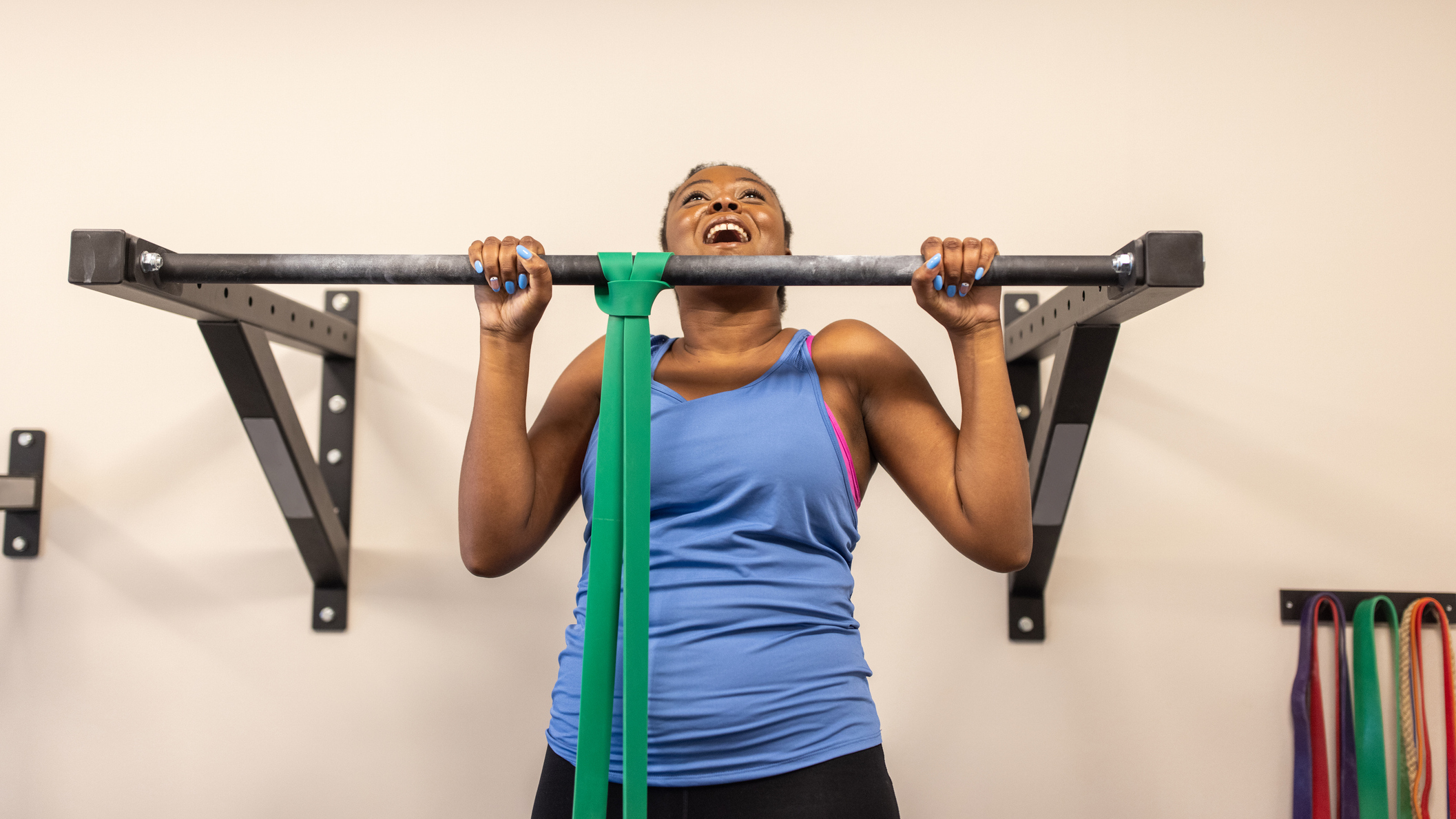Five exercises that will help anyone achieve their first pull-up
Strengthen your grip, arms, back and even core with this five-move workout

Let's face it, most of us can't do a pull-up, but before explaining how to achieve your first pull-up, it's worth asking why would you want to be able to do a pull-up anyway. What's so impressive—or practical—about pulling your body skyward from a dead hang?
Well, if you can do a pull-up it means you have a strong grip, strong core, strong arms and, most importantly, strong upper-back muscles. And doing more pull-ups makes all of the above much, much stronger. In fact, it's one of the best ways to strengthen your back using just your bodyweight, and you can do it at home with a simple doorframe pull-up bar.
Pull-ups (palms facing away) and chin-ups (palms facing toward you) have also been proven to activate and strengthen your core muscles, making them a fantastic move with crossover benefits for activities like hiking, weightlifting, swimming, and even tennis or golf.
Finally, hanging from a bar is a great way to decompress your spine, easing pressure on your lower back that can build up from long hours at a desk. Got all that? Good—here's a five-exercise workout from an expert trainer that will help you build the strength to master your first pull-up.
Five exercises to help you achieve your first pull-up
A post shared by Gede Foster (@gedefoster)
A photo posted by on
In this video, Gede Foster, director of fitness and performance at digital fitness platform FIIT, demonstrates a flawless pull-up with hands just wider than shoulder-width apart, body in a straight line from shoulders to ankles, core engaged and chin well above the bar.
Want to do the same? Foster recommends practicing these five exercises to build the strength, coordination and technique required to execute your first pull-up.
1. Lat pulldown
Sets: 3 Reps: 8-12
Start your week with achievable workout ideas, health tips and wellbeing advice in your inbox.
This requires access to a gym. It's essential to bring the bar to your chest, not behind your head. No gym? Sub in a band-assisted pull-up using a long, thick resistance band hooked over the bar and looped under your feet or knees.
2. Inverted row
Sets: 3 Reps: 8-12
In the video, Foster uses a low bar, which makes this exercise tougher. If you’re starting to build strength, use a bar around chest or shoulder height. The further you place your feet away from the bar, the more challenging it is—so adjust your start position to suit your ability.
3. Retracted hang
Sets: 3 Time: max hold
It looks simple, but this will challenge the mid- and upper-back muscles required to initiate the pull-up. Hang from the bar, then retract your shoulder blades, as if puffing out your chest, and hold. This will engage your latissimus dorsi, infraspinatus, and teres major and minor muscles.
4. Hanging shrug
Sets: 3 Rep: 5-10
It's similar to the retracted hang, but not the same. Alternate between contracting and relaxing those same muscles, lifting and lowering your torso. Just avoid going completely limp when you relax to protect your spine.
5. Eccentric pull-up
Sets: 3 Reps: max
Allow gravity to do its thing. Step or jump up to the top of the pull-up position, then slowly lower yourself using your back and core muscles, before resetting for the next rep. Still too tough? Use a resistance band to assist you.
Workout tips
Foster suggests resting for around 60 seconds between each set.
With each exercise, she uses a slow eccentric tempo, which is another important ingredient to mastering your first pull-up. For example, with the lat pulldown and inverted row, she pulls the bar towards her quickly but returns to the starting position slowly, maximizing the amount of time her muscles are under tension for. The longer muscles are under tension during an exercise, the stronger they become.
Foster recommends following this five-move workout for at least four weeks, once or twice a week to build the strength needed to nail your first pull-up. It could take much longer—sometimes two or three months or more—but consistency is crucial and gradually increase the weight you're lifting, or the difficulty of the exercise, to encourage progression.
When you feel ready to attempt your first pull-up, Foster suggests going in relatively fresh, so after your body has recovered from the last workout. Warm up well by mobilizing your shoulders, chest and back (this upper-body warm-up is a great option), and perform a couple sets of retracted hangs and hanging shrugs to prime your body for action. Then give it your best shot. Good luck!

Sam Rider is an experienced freelance journalist, specialising in health, fitness and wellness. He is also a REPS level 3 qualified personal trainer.
